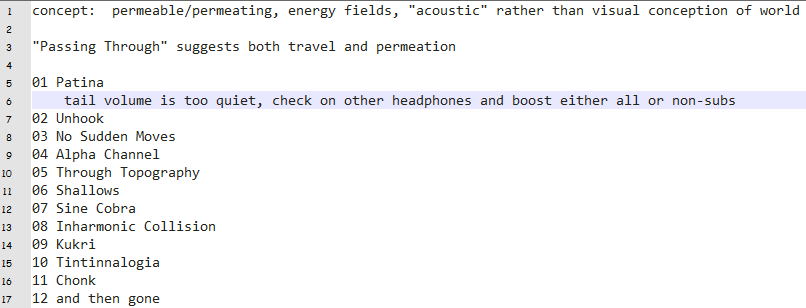Hmm.
The new album is doing pretty well by my standards: a few people so far have voluntarily paid for it (thanks!), there have been some appreciative comments, and a DJ is to play something of mine in a show called Sonic Tapestries on Resonance FM based in London.
Having a theme for each album is a strength, compared to no theme or retroactively renaming things to fit a theme when the album is 3/4 finished. So I’m brainstorming a bit about the next thing. I’ve already decided against overt political themes, though.
The selling-off of old gear seems to be progressing nicely — putting stuff up on Reverb instead of relying on forums really helps. I turned some of those proceeds around to preorder a Rossum Panharmonium, which I suspect might be even more full of surprising uses than Erbe-Verb.
I’m also doing a bit more research/homework on synthesis techniques. I think I finally have a good theoretical grasp on phase distortion as used in the Casio CZ series — which was pretty neat and relatively easy to work with. Casio’s foray into professional synths was pretty brief and a little rocky, and nobody else really picked up the PD synthesis ball probably because FM was more versatile, and samplers and virtual analog were really taking off by then. reFX PlastiCZ imitated the CZ synths nicely, u-he Bazille has PD as one of the things its weird but versatile oscillators supported, and I think there’s a CZ Eurorack oscillator or two. Some of the tools in XFer Serum are technically phase distortion too, though not with a similar style to the CZ. But it’s still mostly the black sheep of the digital synthesis family, and that makes me want to explore it some with the ER-301 and perhaps the E370.

